Exporting and Importing Mailbox Content in Outlook 2013
Published by Jacob Martin on September 2, 2015
Your email and mail folders can be exported along with colanders and appointments, notes, tasks from Outlook as a .pst file and import everything in one go onto another PC or mail profile. The .pst file can be stored to other media with any sort of data, but nevertheless they can only be opened with Outlook, since .pst file cannot be opened with any other program.
Note: Information under messages, attachments, calendars, contacts, etc during any import/export procedure must be satisfactorily sheltered as per norms. At the time of saving or backing up any .pst files ensure that you are complying with encryption and associated necessities.
Exporting Mailbox content to a .pst file
- With Outlook open, select the FILE tab in the upper left.
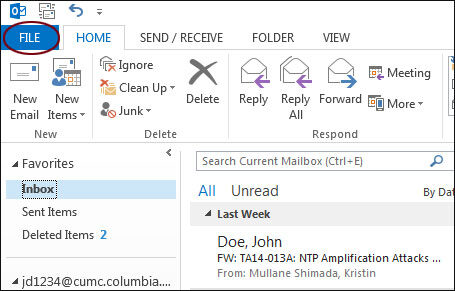
- Select the Open & Export link in the left, then Import/Export.
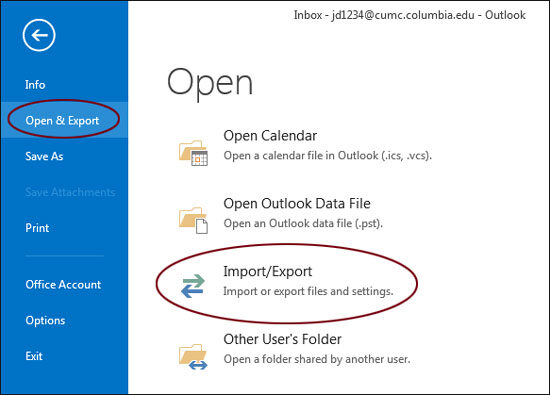
- In the Import and Export Wizard dialog box, select Export to a file, then hit next.
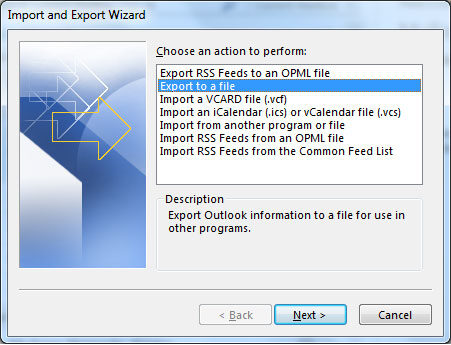
- In the Export to a File dialog box, select Outlook Data File (.pst), then Next.
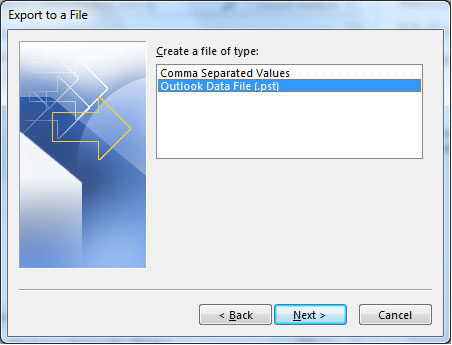
- In the Export Outlook Data File dialog box, choose desired heading (usually your full email address) then select Include sub folders to include all folders for the account, and click the Next button.
NOTE: you may have to use a scroll bar on the right to find your main Mailbox.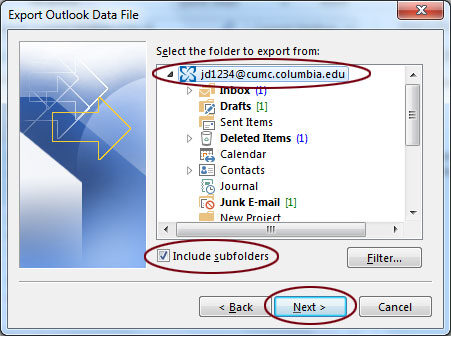
- At the top of the Export Outlook Data File window, in the Save exported file as field, Outlook names the file “backup.pst” by default and displays the path for saving the file in your system’s Documents folder in a sub folder called Outlook Files. Select Finish accepting these default settings.
Note: Pick Browse and to save to an unusual place on your PC if you desire, or to rename your .pst file.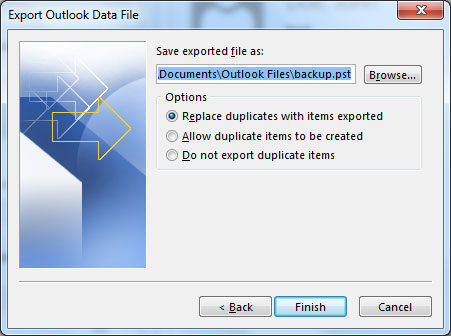
- A Create Outlook Data File window will emerge.

In both fields type in a password that will be required when the Personal Folders File is opened. Vital: If you forget the password there is no way to retrieve it or otherwise open the .pst you are creating; be certain to keep track of any password used here. Select OK to prolong.
- Your computer will pause as the .pst file is created; if you have a lot of items to back up you may see a window that shows the status of each item as it is backed up. No notice will appear to indicate that the backup is done, simply verify that the “backup.pst” file appears in your Documents\Outlook Files folder when Outlook has finished (if you have changed the location and/or name in step 6 above, look for the appropriate file name/location).
Adding and Importing Mailbox content from .pst file
Reminder: Importing a .pst file permits you to amalgamate items into one Mailbox/list of folders. If you would cleanly like to release the .pst file and be proficient to sight email messages, calendar items, etc. from within Outlook as a detach list of folders, follow the commands instantly as given below.
- Select file in the upper left corner of your Outlook 2013 window and choose File tab, then go to open and export link and the option to Open Outlook Data File.
- Open Outlook Data File window will appear browse the file you would like to open, select it and click Open button in lower right.
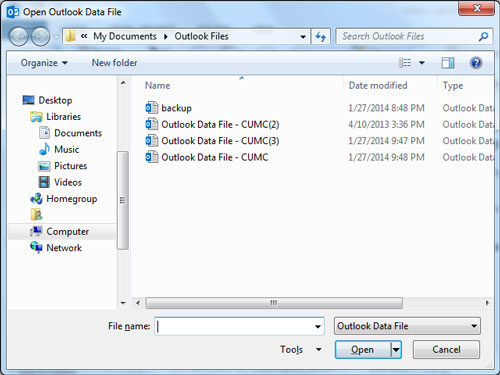
- Data file item will appear in the fore coming navigation pane. In order to view folders click on the arrow in the left file headings to see subfolders.
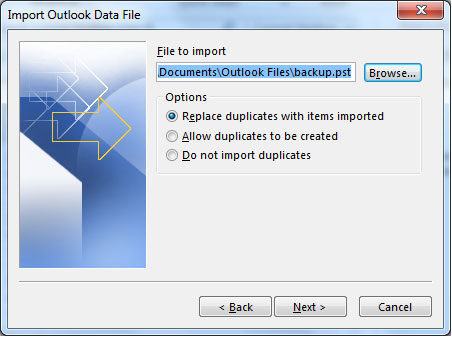
If you no longer desire to view the data files in the prospect, simply right-click on it and opt for Close Outlook Data file from the appearing menu. The information will not be deleted except you browse to the .pst file on your PC and delete it by hand.
Caution:
For instance while performing all above procedure of importing and exporting data if you miss or lose any data or if your data gets corrupted then for the recovery and repairing purpose you can opt for PST File Repair Tool. This tool is capable of setting up any error and also by design recovers all the deleted emails, contacts and other correlated rudiments from it while repairing the PST file.



How to use it?
Step 1: You need to do4+wnload, install and run outlook PST repair tool. Then click on ‘select outlook file’ to choose the PST file where you want to work or you may find the specific PST file also.
Step 2: Press “start” to begin scanning, once you have selected the PST file.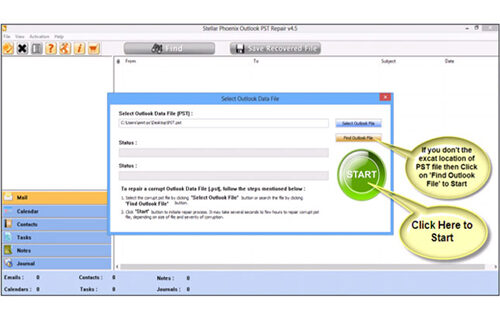
Step 3: After completion of scanning, all recovered mailbox folders and other data appear on the left side of the window. You can select the files of your choice from those.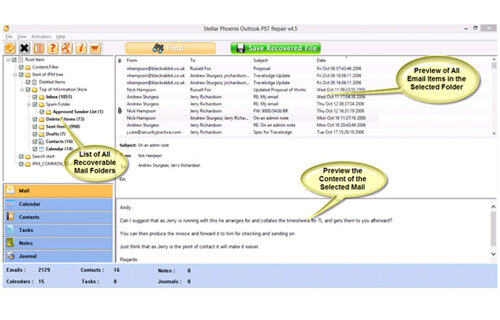
Step 4: After selecting items of your choice you can press “save recovered file” to recover the files on your PC.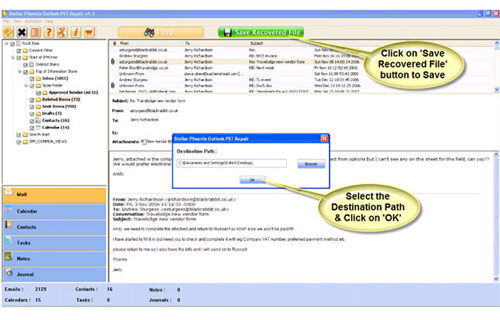
Step 5: When your files are saved, a dialogue box appears that confirms that files are saved and also shows the “recovered file size” and “destination path”.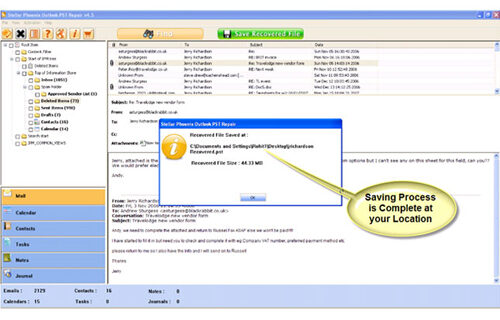
328 Total Views 1 Views Today
